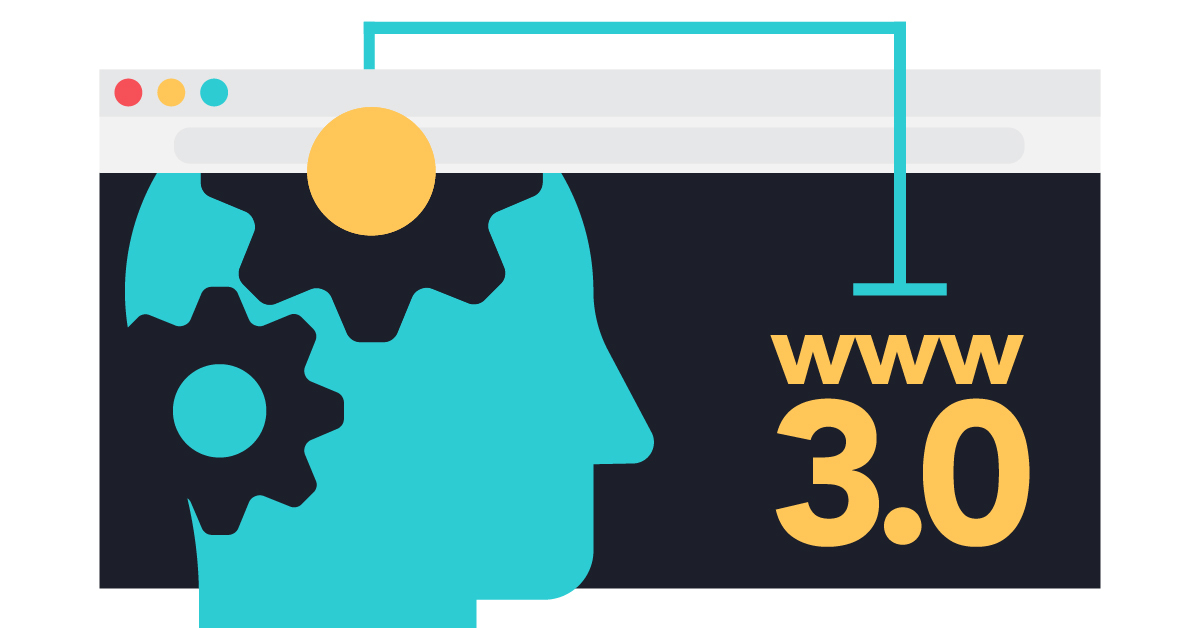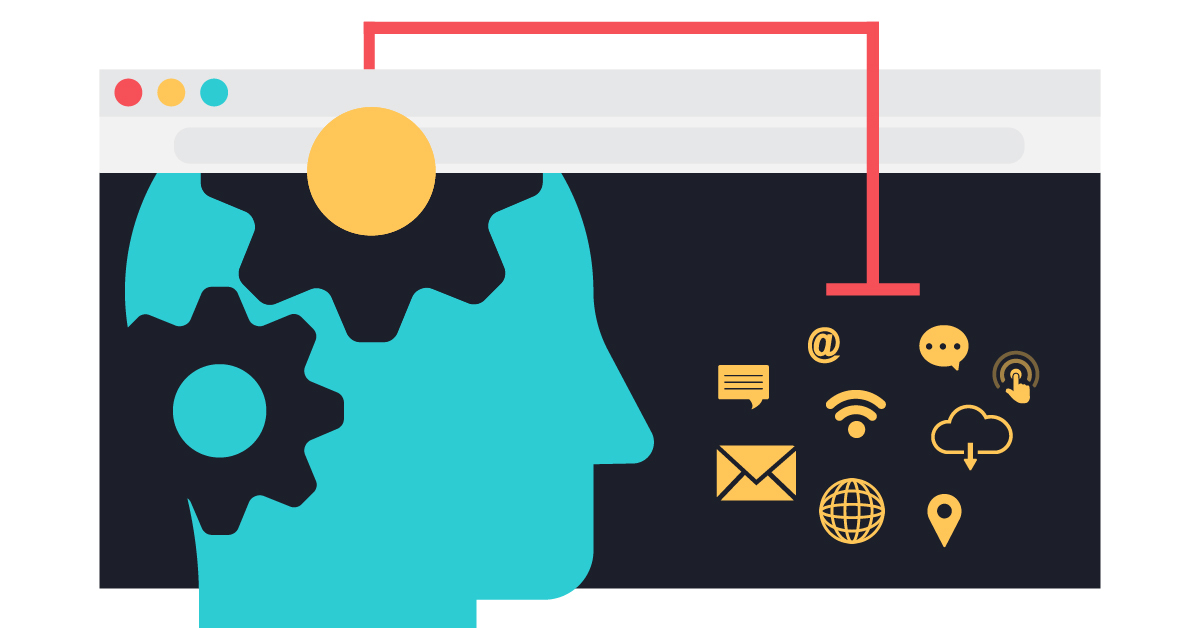
10 min read
The Experience Web, Part I: It’s the End of the Web as We Know It?
Web 3.0: Is the Semantic Web the End of the Web as We Know It?
A look at Web 3.0’s characteristics, and how we got here to the implications for your business and your website.
Editor’s note: This piece was originally published in 2014. It’s been so popular that we updated it in 2020 with new industry developments.
Without most of us realizing it, the web has morphed into a source of free content and services a few major players extract from your site and serve to customers on their sites.
- Want to see a movie at the Bijou Theater? Just search “movie times Bijou” and Google will display them. Of course, a little further down on the page, you’ll see a link to the Bijou’s website, but why bother? You already got what you needed.
- Did a Facebook friend share an article you don’t agree with? You could search Google for articles to counter it. But why? Facebook automatically shows you content right below your friend’s post, ready for you to share in rebuttal.
- Did your favorite author tweeted the Amazon link to his latest book? You could remind yourself to check it out later, or you could retweet and add the hashtag #AmazonCart so it’s waiting for you to buy on your next visit to the online megastore.
In these examples, big Internet names Google, Facebook, Twitter and Amazon brought you the Web content or service you needed right where and when you needed it. They saved you clicks, time and hassle. Most importantly, they kept you within their commercial ecosystems. Welcome to the “Experience Web,” or the “semantic web”, often known as Web 3.0.
A Brief History Of The Web
The Static Web: 1990s
Built on the hypertext foundation of the world-wide-web, pages were comprised of static HTML, images, and hyperlinks. This was the age of “webmasters,” with their trusty text editors and FTP clients. Changes to websites were manual and labor intensive.
The Dynamic Web: 1993-2004
As web content exploded, site management became a burden. Server-side scripting, beginning with Common Gateway Interface (CGI) in 1993, and soon followed by Perl, Python, and PHP, came to the rescue. Web developers could now build incredibly sophisticated and dynamic sites by connecting them to powerful databases. This made user generated content and Web 2.0 possible.
The Assembled Web: 2004-2014
With more and more web sites and applications, developers saw the need for standardization and code reuse. Enter development frameworks like Rails (for Ruby), Django (for Python), Cake (for PHP) and Drupal (also PHP), with its ever-expanding open source trove of possibility.
Finally web developers no longer had to build login forms or basic CRUD (create, update, delete) interfaces from scratch every time. Frameworks provided building blocks that could be assembled, allowing us to focus on custom building only the very unique functions. The standardization of the Assembled Web era meant lower barriers to entry for online innovators. And scores of sites, services and tools emerged, all vying for users.
The Experience Web : 2015 – 2018ish
According to Dries Buytaert, the Experience Web is where the Assembled websites and apps we build will be consumed, interpreted, and, ultimately, made increasingly irrelevant by web giants. Instead of pointing users to your site, they are increasingly taking what they need from it and serving it to their users on their sites. Depending on your perspective, these big players are either defying Google’s “don’t be evil” dictum, or simply applying their tremendous resources and scale to provide users with a more convenient experiences. In doing so, they are keeping users’ wallets and data in their commercial embrace.
Web 3.0, the Semantic Web: 2018 – Today
The Experience Web morphed further into what is commonly known today as Web 3.0. So what is Web 3.0? Web 3.0 “overcomes the issues of privacy and security” and allows internet users to access data, now centralized in the cloud, from any location or device. Web 3.0 is also called the Semantic Web, due to how it works. As described by one source, the semantic web blends a variety of internet services including “semantic web, microformats, artificial intelligence, data mining, natural language search and machine learning technologies.” When users search, the web understands the context and provides results to meet their needs.
By definition, Web 3.0 blends both words and visualizations, and builds off data gleaned from past activities and online preferences to offer a more customized experience to the user. It does this by limiting user control over content, reorganizing data, and treating the web like a database.
Web 3.0 Definition: Implications for You and Your Site
Your business website used to be a storefront where users came and looked around. But today, it’s more of a distribution center where the big players come to pick up content to repackage on their own shelves. Internet users most often see things through the lens of these big players, who have become the main distributors of web content.
The big players have positioned themselves to serve the user by emphasizing usability and convenience. Service providers like Amazon and Google are tearing down barriers to make it easier for users to buy through them, wherever, whenever and on whichever device they use. Facebook, LinkedIn and Twitter are making it easier and more convenient to do more without ever leaving their environments. And much of this is supported with content and services extracted from sites like yours and mine. Beyond this, sites are taking information learned about you through your past behaviors and using it to tailor advertisements and results based upon your preferences and what you’re most likely to want to see.
Keeping Web 3.0’s characteristics in mind, let’s look at what the Web’s evolution means for your business and your website. There are some things site developers and owners can do to take advantage of Web 3.0 and semantic web optimization, and in today’s era a smart web strategy is often twofold. You have to make sure the bug guys can easily find and index your content, AND you need to create content that is valuable and uniquely viewable on your site.
 Reconsidering Your Internet Strategy: 4 Ways To Optimize For Web 3.0 The Semantic Web
Reconsidering Your Internet Strategy: 4 Ways To Optimize For Web 3.0 The Semantic Web
It’s not that your site is becoming irrelevant, but rather that the role of your website is changing. The key to understanding semantic web optimization is to extend your internet strategy beyond your website, and to keep in mind that the content displayed in a browser is only the vehicle for what really matters: helping a user get from point A to point B. This user-centric orientation distills what’s important down to one thing: the user experience. User experiences are the end. Websites are just one of the means.
The leap we have to make is to disassociate web traffic from successful internet strategy, and ensure that the site and strategy you build enables users to learn about, buy and use your products and services – despite what the big players are doing.
1. Use Semantic Web Standards
Big “content distributors” get their information from hundreds of millions of different sources. The mechanism that allows them to display content from almost anywhere in the Web 3.0 era is the semantic web. Semantic markup standards (Extensible Markup Language, or XML, is probably the best known) are a way of formatting your code so that web crawlers can easily understand the content. Semantic markers around your content make it understandable to machines, and algorithms used by Google, Facebook and others can infer what users want from their search queries and browsing behavior. Your website needs to be structured first and foremost to play well with Google’s web crawlers, so ensure your web developers are fluent in the formats required.
2. Become A Content Channel
It’s important to provide content internet users can only get from you, and to provide that content in whichever ways are most convenient for the user no matter what device they are using. Content must be functional, and deliver unique benefits at the user’s convenience. One good way to ensure people continue to spend time on your website is to become an essential content channel. Create content — like games, rich media experiences, or software as a service — that users can only get from you. Then make it as convenient as possible for people to keep coming back. This usually means responsive web design, smartphone apps that are glitch free, and an overall design that is clean, beautiful, and discoverable.
3. Be Extensible
The reality of the semantic web age is that big web services will extract content from your site for the convenience of their users, whether this benefits your business or not. Rather than trying to further wall your content off, consider finding additional outlets for your content that offer a strategic advantage to your business. One way to do this is through third-party service add-ons, which extend your reach and creates a convenient, synergistic product that is more difficult for the big web giants to co-opt. Find the strategic partners that allow you to extend your online content and services to new users so that all parties—users, your business, and your partners—benefit.
4. Be Responsive
The only predictable characteristic of the future beyond Web 3.0 is that a great content strategy is not static, and you need to be ready to respond in real time. The best thing you can do for your web strategy is to have a dedicated team who stays informed about these changes as they happen. Maintaining a website for your organization that gets the right information to the right people is a full-time job, now more than ever.
Even if click-throughs and time-on-page matter less in the algorithms down the road, it will still be important to have an online presence and you will always need a website. Ready to talk about semantic Web 3.0 optimization and how you can keep up? Contact us!


Leave a Reply